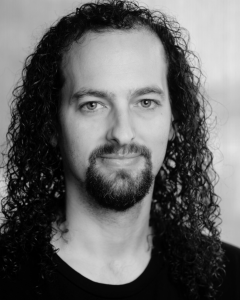
MATTHEW ARMSTRONG
I am very interested to enter a choreographic process with some of the wonderful members of Malashock Dance and create a dance piece centered around the idea of growth. A subject that seems so easy to achieve in our childhood becomes more and more difficult for many as life progresses. I am currently investigating certain situations in my personal life where I try different elements to create a space for growth, whether that’s physical, mental or spiritual. I would love to play with these elements and ideas within my choreographic process. “Everyday Dances” is a smart and excellent platform to showcase the many voices San Diego has to offer in terms of Contemporary Dance. After over a decade working on my craft in Tijuana and throughout Mexico, I would love to participate in this edition of Everyday Dances III to continue to choreograph, share my experiences I’ve gathered in this life through my movement language, and present my voice to the greater San Diego area.
For me, connection is the fundamental principle within my process and artistic philosophy. Coming from a small town in Northern California, I grew up very curious of the wonders of the world and the desire to explore it as much as I can. Within my life experience I’ve cherished the connections with the wonderful people who have crossed paths with my own. Coming from different backgrounds and having their own stories to share, I consider those stories as true treasures. Using our unique experiences to generate moments in which our worlds can fuse to create artistic works in the moment, connecting to our physical bodies and abilities, our communities, our souls, energies, and past lives. Using each moment of connection as our voice to share what we need the world to hear. Working within those moments are so gratifying for me and I believe within those moments the best art is made. In a brief description of my process, I like to share my movements and ideas with the dancers and are very open to their responses, thoughts, and feelings in the process. I believe it is very important for those who are dancing within my work can connect to the process and have a sense of depth in what they are presenting to the audience.
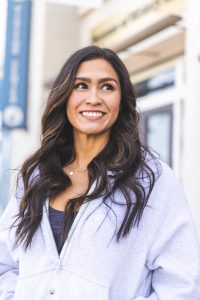 VIVIANA ALCAZAR
VIVIANA ALCAZAR
I believe work that is intimate and deeply felt can impact and begin transform the many lives it reaches. We are at a time in life when audiences need inspiration to take risks and be vulnerable, it would be an honor to share this work with the Malashock organization and audience. I enjoy story telling and using the the choreographic process for not only creative expression but to also provide healing and growth processing through the many shared experiences we have as humans. I enjoy when others can relate to my work, journey and form of expression.
I would like to create a piece using a Female Spoken Word artist that depicts the story of falling and releasing into your inner most secret self and tapping into our vulnerability which could then encourage others to be brave and vulnerable as well.
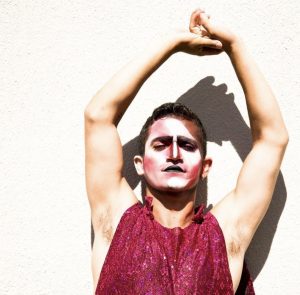 sol dela rosa
sol dela rosa
Sol moves through time and their lives through queer love and loss, within color and always in a style of play. Play as a motive to learn, and as a means of sourcing and cultivating passion. Passion as a driving force for compassion and community. Sol believes in the power of movement and play to create healthy conflict and as a result create opportunities of communication to practice the attempt and alternative ways of “doing”. Practicing failure as a way of opening new ways of imagining, relating, and caring.
Community is important, and working with dancers of this level is a privilege and honor. It allows for depth to be embodied, for community to be created, and for safe spaces to emerge. I find that these conditions then create a space for healing, storytelling, and for discovery of self and beyond. Working with dancers of this level will not only grant the opportunity to share my experiences but also to listen and hear of their own. I believe we are all in a state of mentorship, viewing the space to hold no real leader but instead to hold agreement of guidance and connection to bring us towards what we love: dance. ” “I like to look at every piece I make as its own unique person. Holding its own conflicts, solutions, personalities, and needs. I always approach making work through queer theoretical lens, and actively engaging in a process of play to discover what the work wants to become. With my experience in teaching Queer Theory, certain ways of thinking are introduced to the space to invite the dancers to relate to the infinite possibilities they posses and to allow both the personal and fiction to blend. Embracing habit, and also breaking out of it. Seeing themselves as poetic clusters and metaphors, we create imaginary spaces that reflect the human condition.
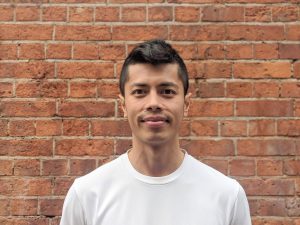 GARY CHAMPI
GARY CHAMPI
I will enjoy the opportunity to create on the Malashock dancers because I completely agree that dance is an invaluable part of the human experience. And my brief experience with John and the company provided additional insight into my role as a dancer maker and educator, reinforcing that what we do is important. As a San Diego native, I would enjoy contributing to the arts community that welcomed me during the unprecedented times of 2020-2021.
The projected work I’ll create will be for a cast of dancers exploring the ideas of the information we hide from others – be that from our peers, our friends, our families, and ourselves. What is the actual freedom that comes from doing something when we know no one is watching and what emotions are associated with that experience – shame? pride? joy? self-confidence?” Creatively, my choreographic process is highly collaborative, covering a wide stretch of genres and traversing multiple platforms and contexts. I am inspired by the range of people I meet and interact with, getting to know them on a more personal level through dance. My work explores the human condition, navigating the philosophies that govern our lives as well as the complex psychologies that make up who we are. My movement vocabulary embraces all my dance experiences, from traditional to classical to street; the intersection of my unique dance training and experiences results in its own form of active research. My lexicon is highly physical with many shifts of weight, directional changes, and dynamic qualities to bring the legacy of my Cunningham experience into conversation with my current social and cultural movement practices.
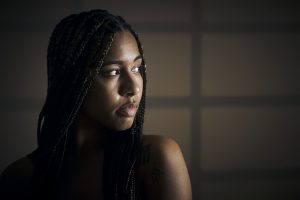 MEGAN CURET
MEGAN CURET
As a Black Latina identifying artist and educator I made it my commitment long ago to tell the story of the muted, to speak on behalf of the unspoken, and to provide opportunities for those in any way shape and form that I could. I have also made certain that my choreographic work remains accessible to all bodies regardless of ability or location. Equity and inclusion take on different meanings across different borders but it remains a part of my mission to ensure that my practice and creative work speak to as many underrepresented bodies and communities as possible.
I am a first-generation Puerto Rican who was born in the Bronx. My father was drafted to the Vietnam War, a life-changing experience that altered the course of his professional endeavors. He moved to New York City to escape the post-war turmoils of living on the island and worked extremely hard to provide me with endless possibilities. His dream was for his only child to have all of the opportunities that were stripped away from him early on. My father’s story of war and immigration are not lost on me, I carry them with me wherever I go. Equally so, the constant narrative of forced Puerto Rican migration to the “promised land” also go with me.
I will explore a choreographic concept that examines the complexities of the human relationship to borders. A world imagined without the navigation of border control, without the notion of separation based on identity. How can the dancing body become a vessel for dancing without borders? Performed in pedestrian clothing. Set against the backdrop of a stage. With one piece of tape stretched across as an imagined border lining. Dancers perform in, around, and throughout. Creating dynamics and movement forms through this border. Only to have said border removed. How does the imagined wall shape the movement dynamics between these bodies? And how do the moving bodies remove this frontera to co-exist both in space and in nature?
 JOHN MALASHOCK
JOHN MALASHOCK
POINTED CONVERSATIONS looks at both our inward facing and outward facing natures. The plurality of how we see ourselves versus the way others see us versus who we really are don’t always align comfortably. As we are often defined through our conversations, and what is mirrored back from them, it often leads to seeking self-definition through questionable eyes. It takes a lot of outer quiet to get past our inner noise.
As an artist, I have always felt that work which is the most personal is also the most universal. When we let movement or stories well up from inside, they tap into experiences that are common to all of us and connect as humans. I believe the power of dance is in its ability to connect directly with people’s emotions.
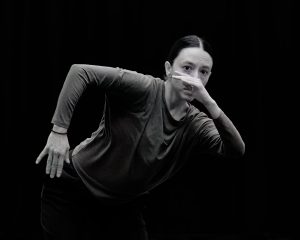 JESSICA RABANZO-FLORES
JESSICA RABANZO-FLORES
I believe that the work that takes place in our chosen movement practice, directly affects and translates out into our daily lives – how we approach movement is how we approach life. My desire is to create a space that encourages authenticity, connection, and vulnerability. I develop a clear vision and intention, but leave space to see what can emerge, excited by how the dancers can bring their own unique gifts to the process. I explore movement that can be physically vigorous, but also supple and fluid. Music is a vital element to dance making for me, and I have the great fortune to collaborate with my husband Rann Golamco in developing a sound that can bring the dance into existence. It’s always pure magic to me when I can be a witness to the ideas in my head come to life, no longer just for me, but shared by a collective. In my choreographic process, I am always reminded of the beauty of humanity – how there is strength in our differences and in how we perceive and interpret the questions we ask ourselves not only as artists but as human beings.
My project called she is what she is and she is whole is inspired by the wild woman archetype, expressed in a singular woman and then amongst four women. I was drawn to the book Women Who Run With the Wolves by Clarissa Pinkola Estés, Ph.D.
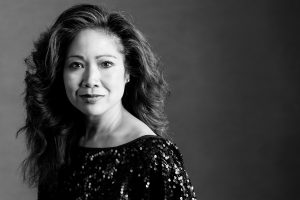 KHAMLA SOMPHANH
KHAMLA SOMPHANH
My approach to choreographing is to share my voice of movement with clear and intentional direction, with thought and vision, with story and heart. My aesthetic lends itself to be full bodied and physically challenging, yet fluid and intuitive. This aesthetic layered in conjunction with the dancers’ individuality makes it become OUR movement. For me, the creative process is an all encompassing experience involving every participant and not one dancer is ever valued more than the next. I enjoy each stage of making dances, however the most rewarding part is when the dancers absorb the movement, process the story, and that collective moment when we feel the dance come alive.
For the setting of Everyday Dances III, I would explore a dance about two people in a partnership. This couple was once emotionally and physically connected, however as the relationship settles, the couple drifts apart with wanting to walk different paths, yet continues to stay tethered with an innate alliance.
I have attended both installations of Everyday Dances and have enjoyed watching the programs of dance makers of our community. I have most appreciated the curation of choreographers who may not have shared a concert line up in the past. As a dance maker, it is especially of value to have the opportunity to work with dancers of such high caliber. Everyday Dances provides such a generous platform to bring together artists to create, perform and share art to the San Diego community and more. I would be honored to be a part of the next installation of this series.
 KYLE AND GINA SORENSEN
KYLE AND GINA SORENSEN
Dance is our vehicle for processing life’s questions in ways that allow movers and watchers to discover a multiplicity of answers. Our dances invoke a sense of wonder and magic. They are luscious and powerful as well as delicate and curious. Often, our process begins with a visual juxtaposition – an unlikely relationship between dancers in space, an evocative costume, or scenic element – and then our ideas manifest in movement that is unique and specific to the examination at hand, to the world we are making. Our dances invite the audience to make meaning and explore associations with us. We love that a surprising image can last in someone’s memory well beyond the curtain call. We believe that along with such images, the feeling of being in that moment lasts too, and we are all richer for it.
We recently workshopped a new concept on students at Grossmont College, and we are seeking the opportunity to develop this material in collaboration with professional dancers. “On Going” explores the human drive to move forward. It speaks to the ways people help one another on the path, and the ways we hold each other back. “On Going” was originally conceived of in two parts. We are interested to dive deeper and reinvestigate Part II with Malashock dancers. The piece consists of duets that travel along a single diagonal path over the course of 5 minutes and 21 seconds to a Romanian folk song entitled “Pana Cand Nu Te Iubeam.” We are flexible on the number of duets – we can create this piece with 4, 6, or 8 dancers. Most of our work in recent years has been created on college students. We are excited to participate in Everyday Dances III because we are hungry to work with professionals who can process our questions and movement with maturity and nuance.
 CHELSEA ZEFFIRO
CHELSEA ZEFFIRO
I utilize methods of improvisation, physical theater, and task-based play to create and devise performance; using choreography as a means to enact, rupture, or propose systems for communication, care, and/or resistance. I believe in the ability of dance and experimental performance to facilitate meaning-making and world-building–ultimately contributing to a deeper understanding of empathic connection.
Lately, I have been thinking about dance, choreography, and performance as a way to reorient the self and others toward alternate or somewhat unfamiliar possibilities. I have been turning to the works and practices of Deborah Hay, Italo Calvino, Ishmael Houston Jones, and Sara Ahmed in both my teaching and making to deepen my understanding of language and improvisation in performance and to make space for unfamiliar (or that which I do not yet know).
I would like to create a trio that addresses themes and ideas of support, disorientation, and symbiosis. What is it to find ourselves in varied/extreme relationships and/or close proximity to one another? What would it look like to make ourselves available to shift through alternative forms/formations of being together? How might we imagine moving through ideas of support and fluidity as practices toward sustainability and adaptation? This trio would draw from a previous work: Future Human Support Positions (FHSP) to develop the themes of conceptual and physical support – adapted to three dancers. I plan on using physical theater tasks and partner work to build and develop movement. The work will be 4-6 minutes trio which relies on play and physicality to dive deeper into this physical research. I plan on being one of the dancers in my work. Music may be an excerpt from the FHSP sound score or it may be a short digital mixtape. “My work is rooted in dance – expanded outward through experimental and collaborative practices which incorporate digital media, theater elements, design, and writing. At the core of my work is a desire to slow down time and interrogate the details of a moment; reframing scale and sequence to destabilize and transform something habitual or familiar.
THANK YOU TO OUR SPONSORS


